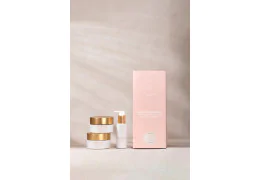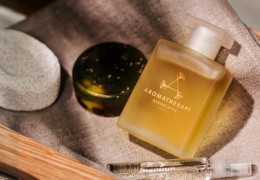UP TO 60% OFF SUMMER SALE
-
WOMEN
add remove
- All >>
-
Supplements
add remove
- All >>
- New
- Bestsellers
- Special offers
- Ashwagandha
- Colostrum
- Collagen
- Omega 3-6-9 acids
- Magnesium
- Vitamin C
- Vitamin D
- Kwas hialuronowy
- Amino Acids
- Anti-Aging
- Pregnancy and lactation
- Detox
- Energy
- Fit & Sport
- Medicinal mushrooms
- Bones and joints
- Fatty acids
- Brain, Memory, Concentration
- Functional beverages
- Eyes
- Weight loss and diet
- Resistance
- Nails
- Dream
- Leather
- Inflammation
- Stress
- Superfood
- Digestion
- Urinary system
- Liver
- Hair
- Vitamins and minerals
- Hormonal support
- Bestsellers
- Collagen
- Colostrum
- Gift cards
- Gift sets
-
MEN
add remove
-
Supplements
add remove
- All >>
- New
- Bestsellers
- Special offers
- Ashwagandha
- Colostrum
- Collagen
- Omega 3-6-9 acids
- Magnesium
- Vitamin C
- Vitamin D
- Amino Acids
- Anti-Aging
- Detox
- Energy
- Fit & Sport
- Medicinal mushrooms
- Bones and joints
- Fatty acids
- Brain, Memory, Concentration
- Functional beverages
- Eyes
- Resistance
- Nails
- Dream
- Cardiovascular
- Leather
- Inflammation
- Stress
- Superfood
- Digestion
- Urinary system
- Digestive system
- Liver
- Hair
- Vitamins and minerals
- Hormonal support
- Bestsellers
- Collagen
- Colostrum
- Probiotics
- Weight loss and diet
- Collagen
- Colostrum
- Gift cards
- Gift sets
-
Cosmetics
add remove
- All >>
- New
- Bestsellers
- Special offers
- Aromatherapy
- Body and bath
- Hands
- Oral cavity
- Tanning
- Intimate hygiene
- Feet
- Face
- Hair
- Bath cosmetics
- Hair care cosmetics
- Hair Styling
- Hand creams
- Natural
- Facial cosmetics
- Essential oils
- Beard care
- Intimate hygiene
- Deodorants and antiperspirants
- Cosmetics kits
- Against wrinkles
- Gift cards
- Gift sets
-
CHILDREN
add remove
-
Supplements
add remove
- All >>
- New
- Bestsellers
- Back to School
- Special offers
- Colostrum
- Omega 3-6-9 acids
- Magnesium
- Vitamin C
- Vitamin D
- Pregnancy and lactation
- Bones and joints
- Fatty acids
- Brain, Memory, Concentration
- Eyes
- Resistance
- Dream
- Digestion
- Digestive system
- Vitamins and minerals
- Bestsellers
- Colostrum
- Gift cards
- Gift sets
- Accessories add remove
- COLLAGEN
-
BRANDS
add remove
- MOST POPULAR add remove
- SUMMER SALE
Search for
- All
- Product
- Brand
Free delivery

SHIPPING TODAY!
Order within:
07
h13
min10
sec
Shipping next business day
0 items
0.00 zł
Total
0.00 zł
Blog navigation

Which filter for your child? Choose the best working
Posted on:
2024-04-08
Table of contents
All skin requires protection from the sun, but children are the most vulnerable to sunburn. This is all due to the lower melanin content of the skin than in adults. Remember, however, that parched, painful skin is not the only problem associated with sunbathing in a child. UV rays are carcinogenic, and today's tanning can result in tomorrow's melanoma. That's why using the right products is so important. What sunscreen for babies and children should be used? Which baby sunscreen will be good enough to minimize the risk of redness? These and other questions are answered in the article.
_2.webp)
_2.webp)
Can children sunbathe?
But let's start with an important question - should children tan at all? The answer is no. Tanning, understood as exposure of the skin to the full sun, is inadvisable for infants and children. Up to the age of twelve months, exposure can be a maximum of 15 minutes. On the other hand, a child up to three years old can spend 30 minutes in the sun. In a four-year-old, this time is extended to an hour. It is necessary to provide adequate protection, which means sunscreen, but also headgear or clothing that covers the skin. Immature skin defense mechanisms are not able to defend themselves against UV rays as in the case of adult skin. That's why it's so important to minimize time outside in full sun as much as possible. The best time to go for walks is up to ten o'clock in the morning to allow the skin to synthesize vitamin D while not exposing it to the sun's strong rays. Also be sure to choose shady places to play, and even use an umbrella - especially for infants.
_1.webp)
_1.webp)
What sunscreen for an infant? What sunscreen for infants will be appropriate?
An infant's skin is extremely delicate, prone to many injuries. It is up to five times thinner than the skin of an adult, plus it is immature, which means that it does not have the defense mechanisms that the skin develops over the years. This includes, for example, the scattering and absorption of ultraviolet rays by melanin. Infants' skin contains small amounts of it, so it is much more vulnerable to erythema and burns. That's why it's important to use the right sunscreen, but also not to walk around in full sun. What sunscreen for children under a year will be appropriate? Here mineral filters, which reflect and scatter UV photons, are recommended in particular. Mineral filters are safe for the skin and cause fewer allergic reactions, although they can stain the skin. They are also more difficult to apply and stay on the skin for a shorter period of time than chemical filters, which we'll talk about in a moment. Infants, due to their high sensitivity to chemicals, should be protected precisely with mineral filters. What kind of baby sunscreen contains them? For example, the Serene SPF30 cream for children by Clochee. It is suitable for toddlers from the age of six months.
Remember that no cream can protect your baby's skin 100%. The right protection for babies is therefore the highest possible SPF, as well as regular application - after every contact with water, sweating, wiping or after two hours spent outside. Be sure to read our article - SPF, what does it mean? - which will answer your question about what SPF is and why it's worth protecting your skin all year round.
_1.webp)
_1.webp)
What is the best sunscreen for children?
For older children - after the age of two - the choice is a bit greater. It's worth remembering that mineral filters are recommended for children under the age of two, as well as for the youngest ones prone to allergies or with atopic dermatitis. If your child is already two years old and has not had skin problems before, you are free to check the effect of chemical filters. Although they don't stain and last longer on the skin, and protect the skin more broadly, beware because they can cause allergic reactions. So choose them wisely, opting for trusted brands with child-friendly formulations. A perfect example is Caudalie's High Protection Sun Water SPF50+, which you can find on our website THEGLOOW.COM. It will work well for children over the age of three. It's a product that protects against UVA and UVB rays, which is very important, since they are responsible for burns and carcinogenic effects (UVB) and skin damage, as well as the formation of erythema (UVA). If you are wondering what sunscreen for children will be suitable, this is a good product that you can use with confidence even in the summer.
_1.webp)
_1.webp)
It's not just what kind of baby and children's sunscreen you choose that counts
It's not just what kind of baby sunscreen you have in your makeup bag that matters. Its application also matters. As with adults, the application of the sunscreen can affect its effect and, as a result, the protection from the sun's rays. Remember that the thinner the layer, the worse the protection. It is recommended to apply 2 milligrams of product per square centimeter of skin. One milligram will therefore cover your child's face, neck, ears and nape.
What else do you need to remember? That sunscreen is mandatory not only in summer. It should be applied all year round! However, while in the sunniest months it is recommended to use SPF50, during the cooler months a sunscreen of 30 will be sufficient. It is worth applying it to the skin of the child's face.
What UV sunscreen you choose for your child matters not only for the appearance of his skin, but most importantly for his health. Keep this in mind both during the vacations and throughout the year.
Related product
Vinosun Protect Very High Protection Sun Water SPF50+ 150ml
Old price: 144.00 zł
Price: 115.20 zł
Discount: 20%
Save up: -28.80 zł
Effectively protects the face, body and hair from UVA/UVB rays.
Ideal for...
Related posts
 THEGLOOW.COM specialists
THEGLOOW.COM specialists
Posted in:
THEGLOOW.COM
2023-09-01
THEGLOOW.COM store is not just a place to shop. It's a space where experts in various fields co-create harmony of...
Read more
 Conscious hand care - slow aging activities Iga Sadowska Wilczynska
Conscious hand care - slow aging activities Iga Sadowska Wilczynska
Posted in:
Cosmetics
2023-09-01
Conscious hand care is an important part of slow aging often overlooked in the busyness of daily life.
Why did Karl...
Read more
 The secret of balance. Learn the secrets of aromatherapy.
The secret of balance. Learn the secrets of aromatherapy.
Posted in:
Cosmetics
2023-09-14
When we rest, our bodies undergo a series of regenerative processes during which tissues are repaired, muscles relax...
Read more

